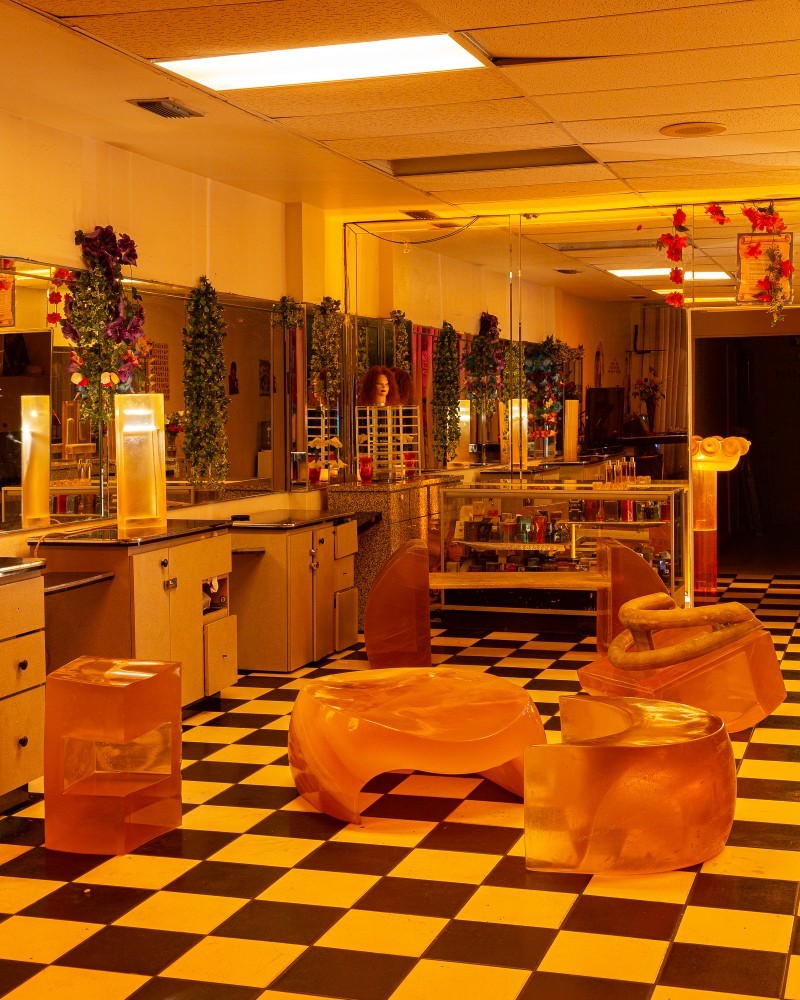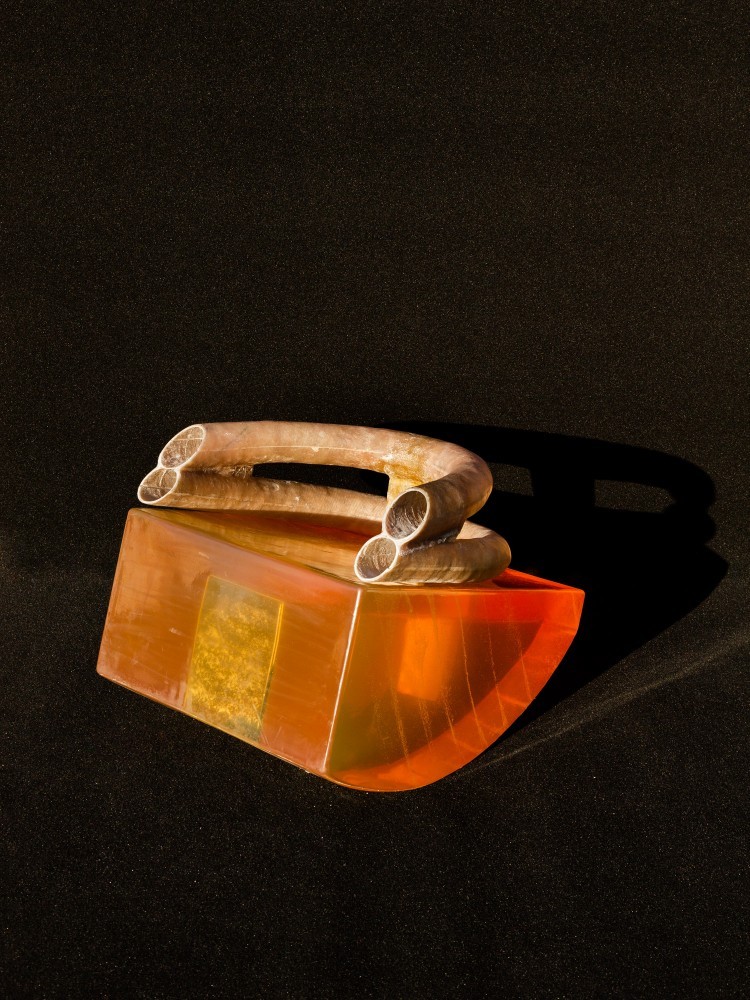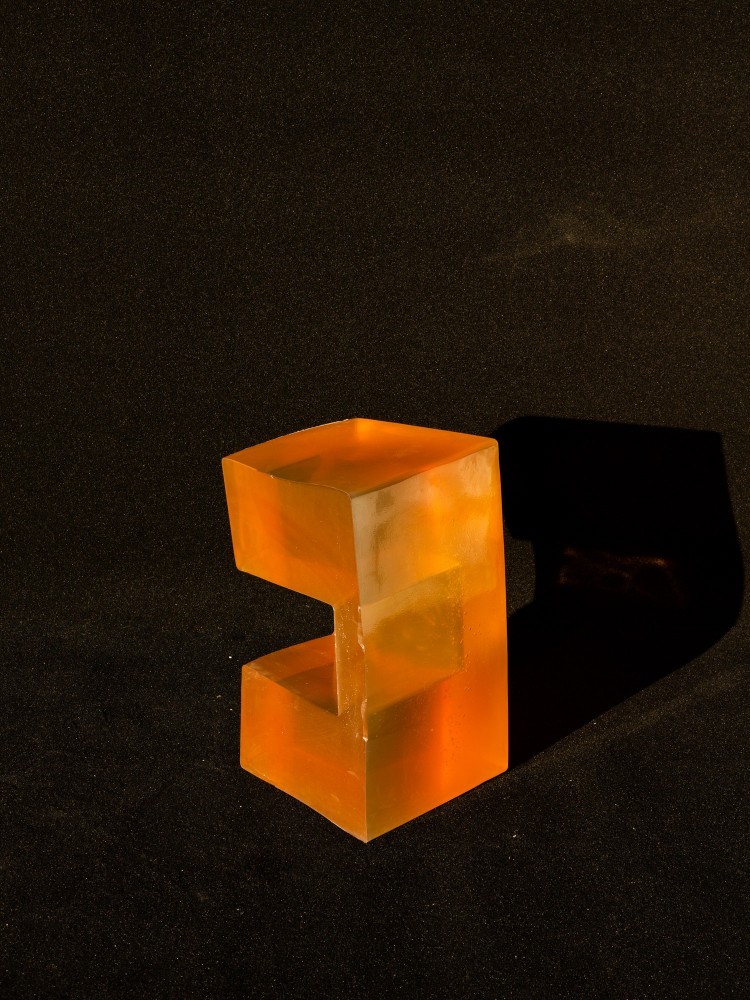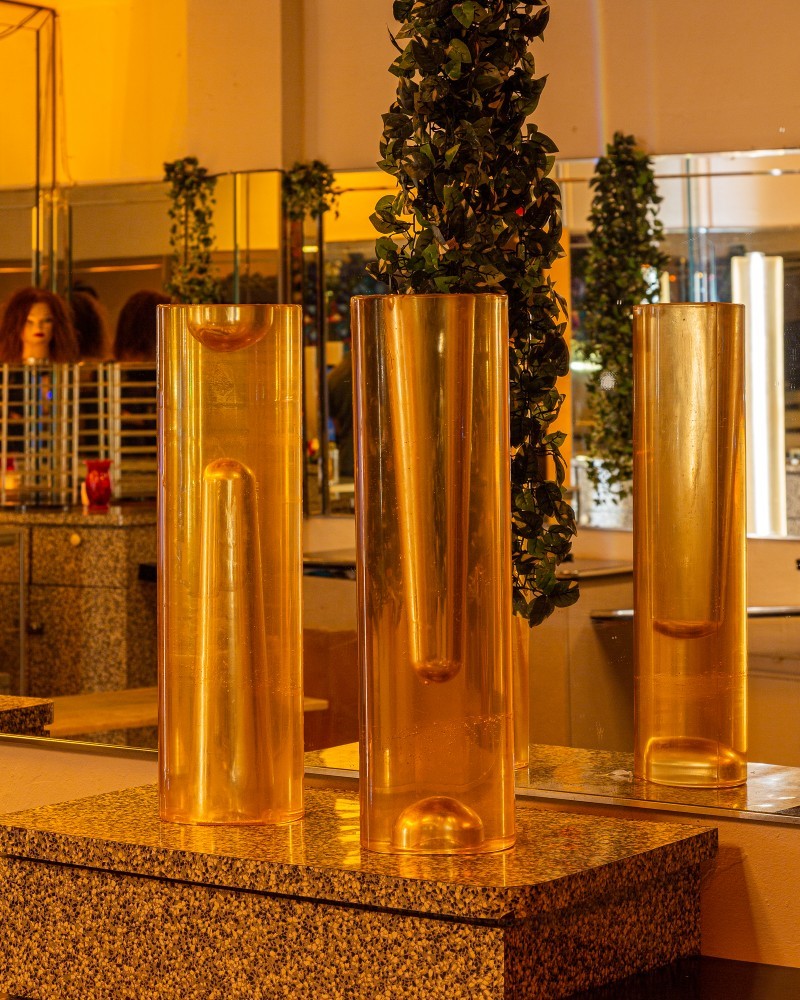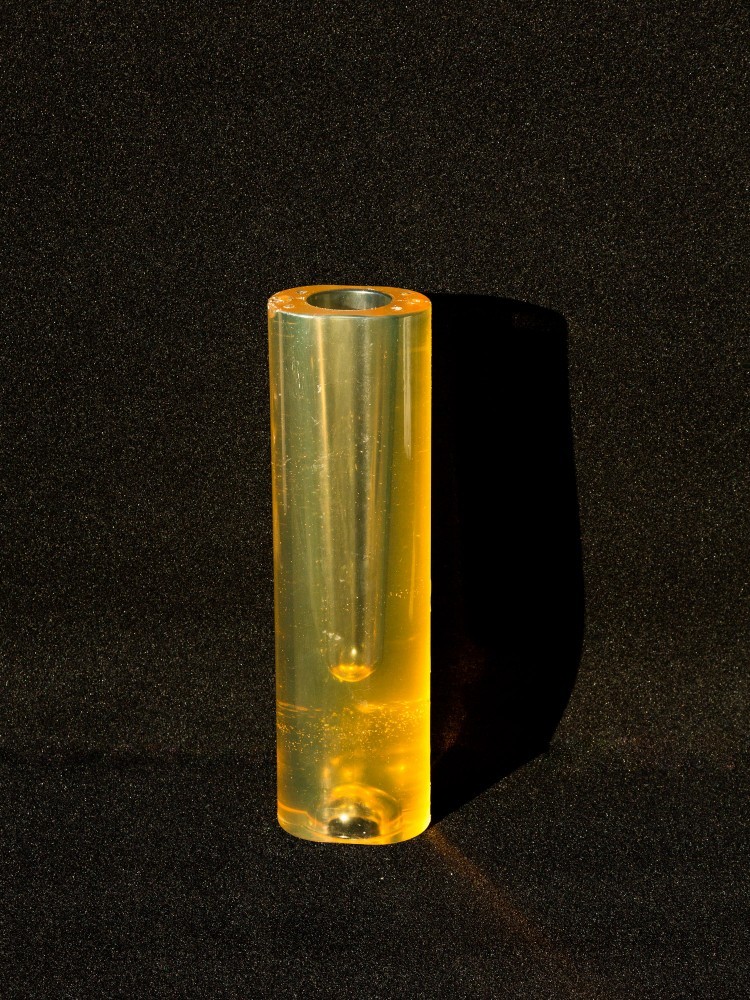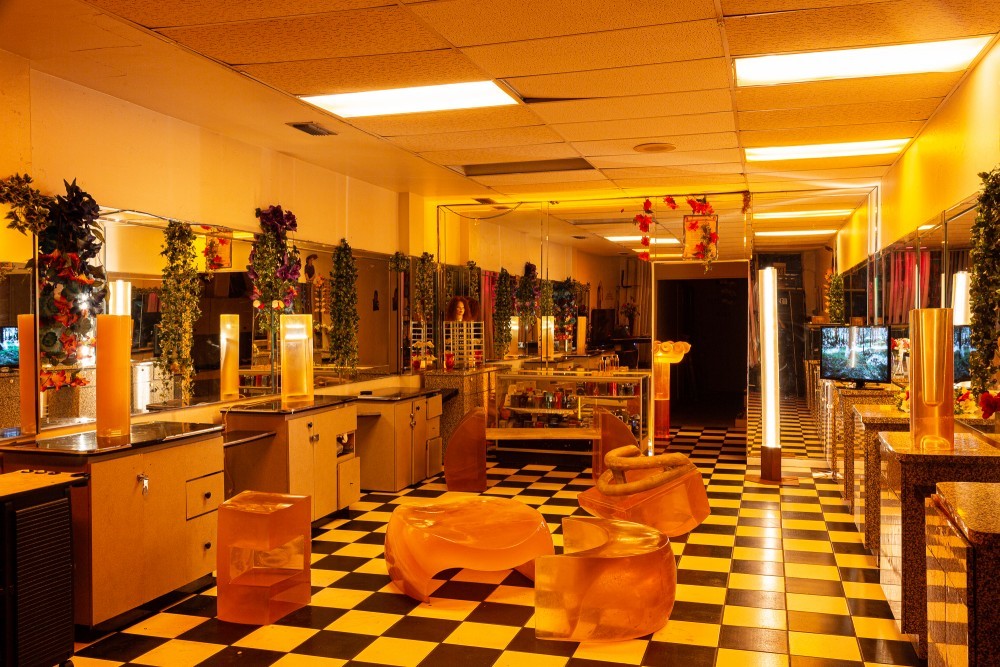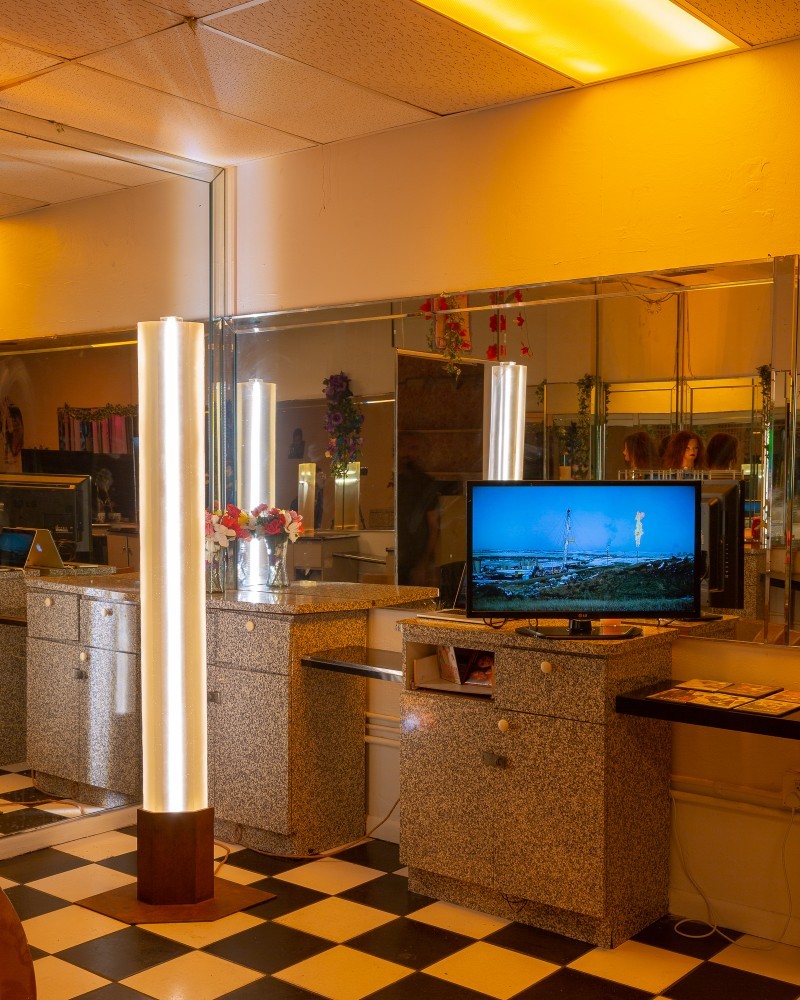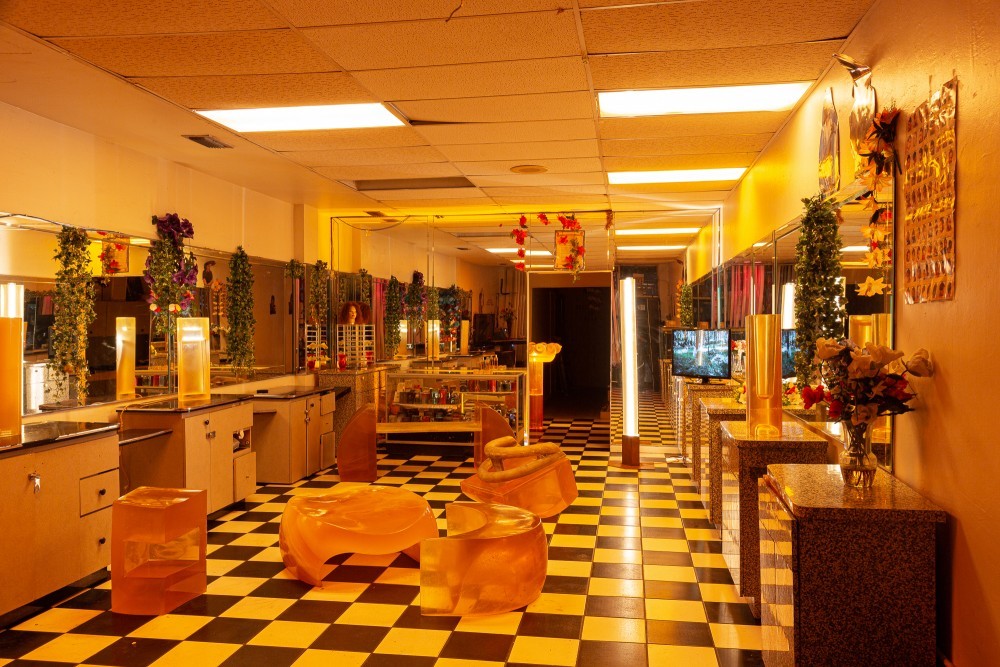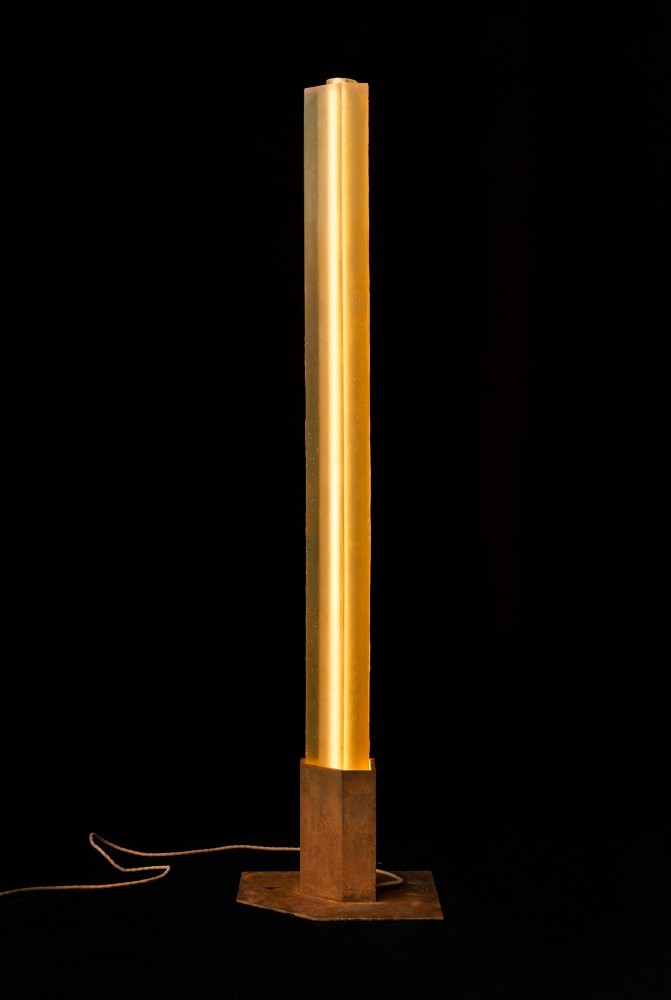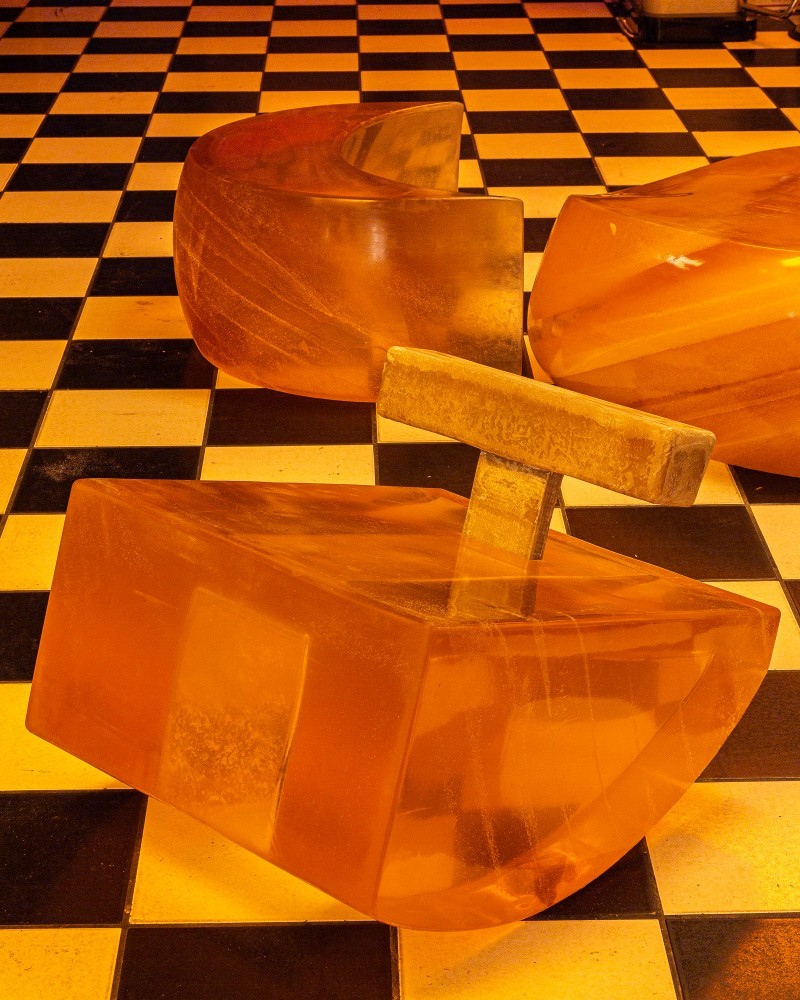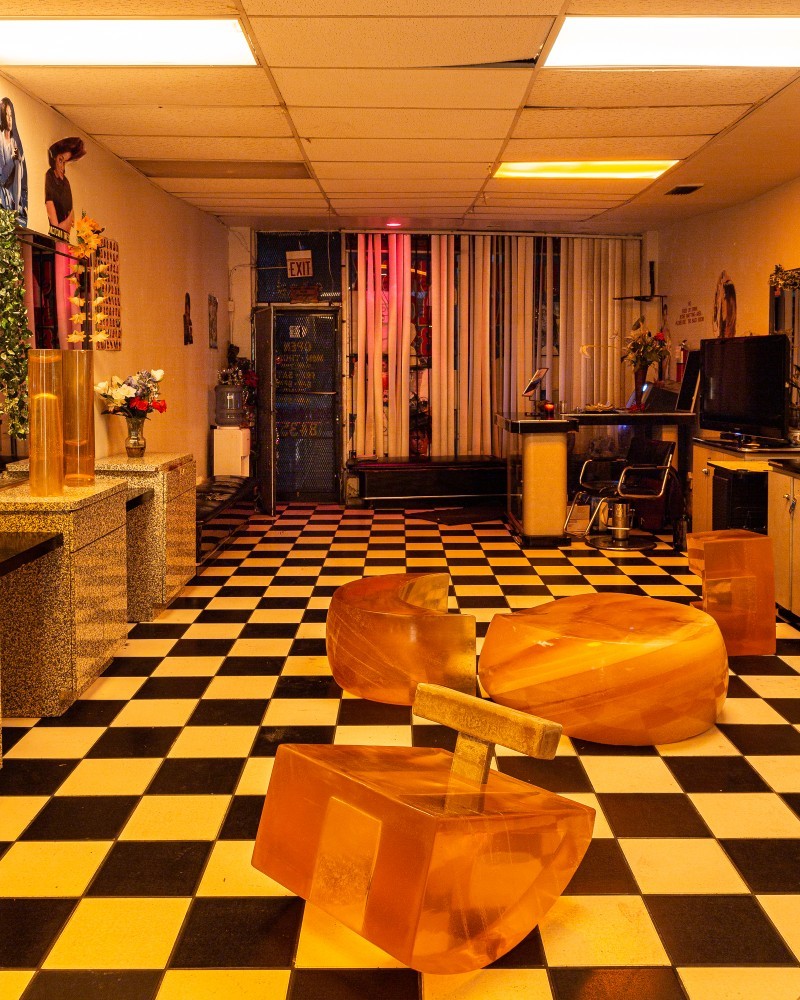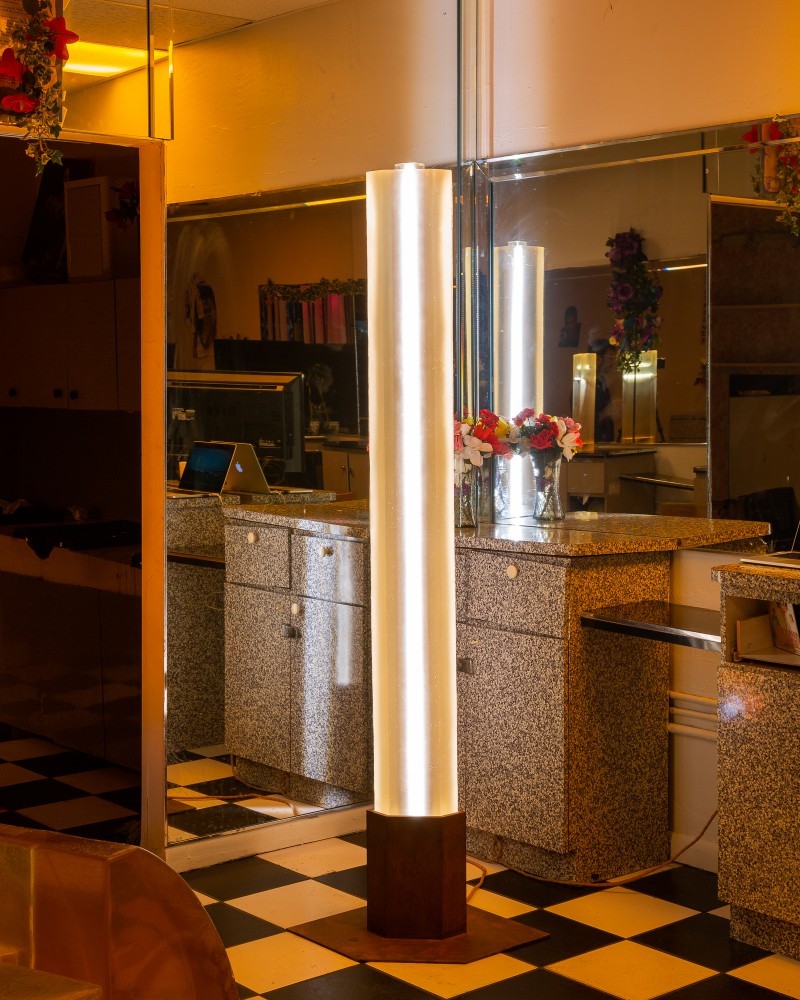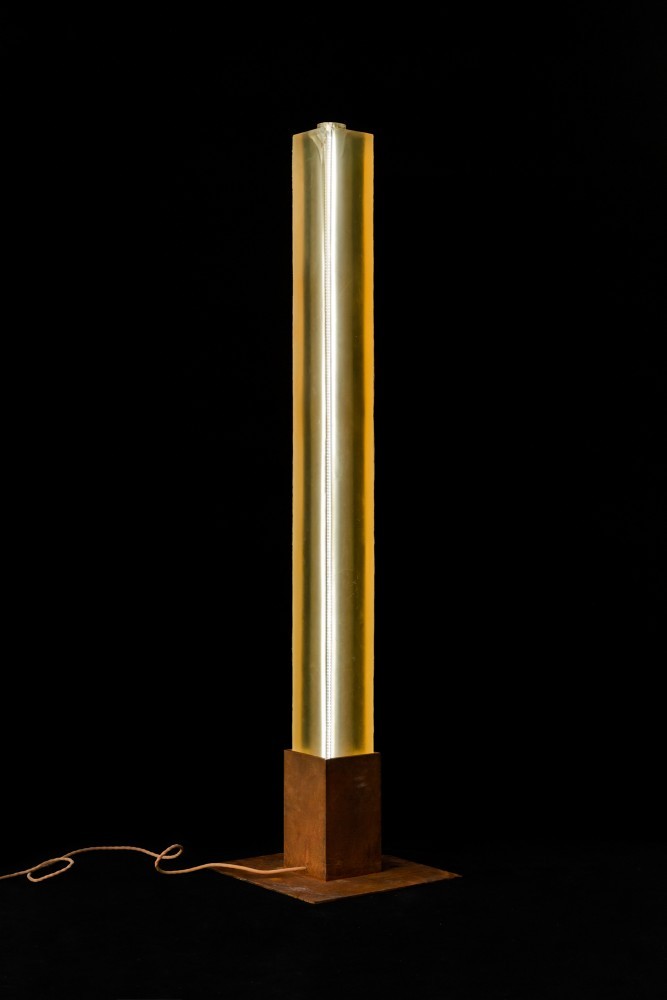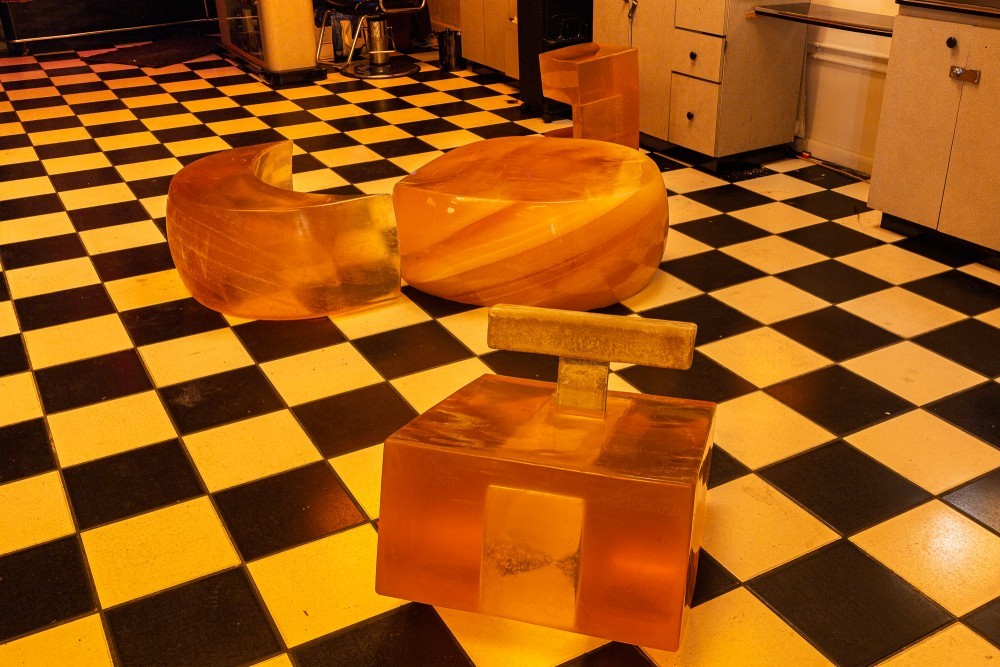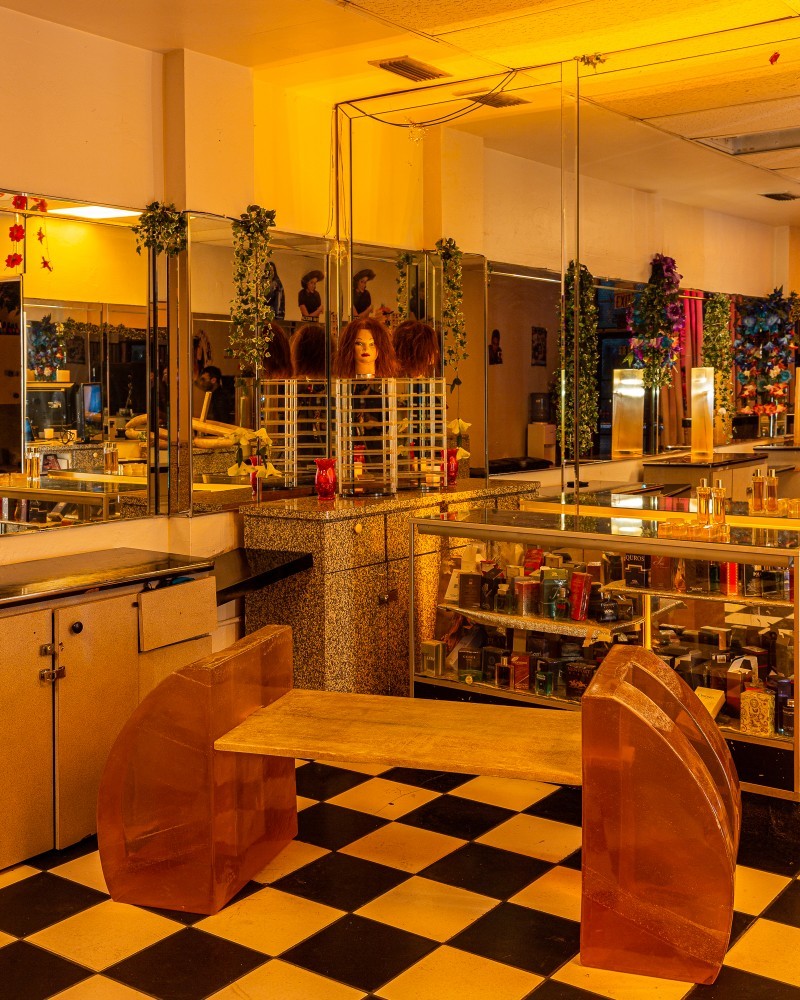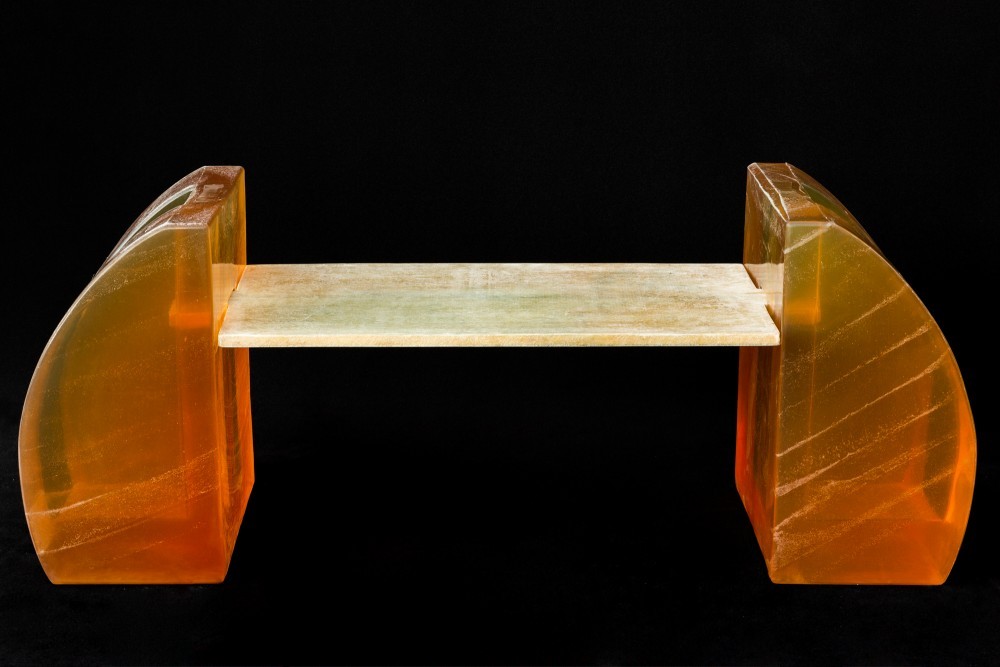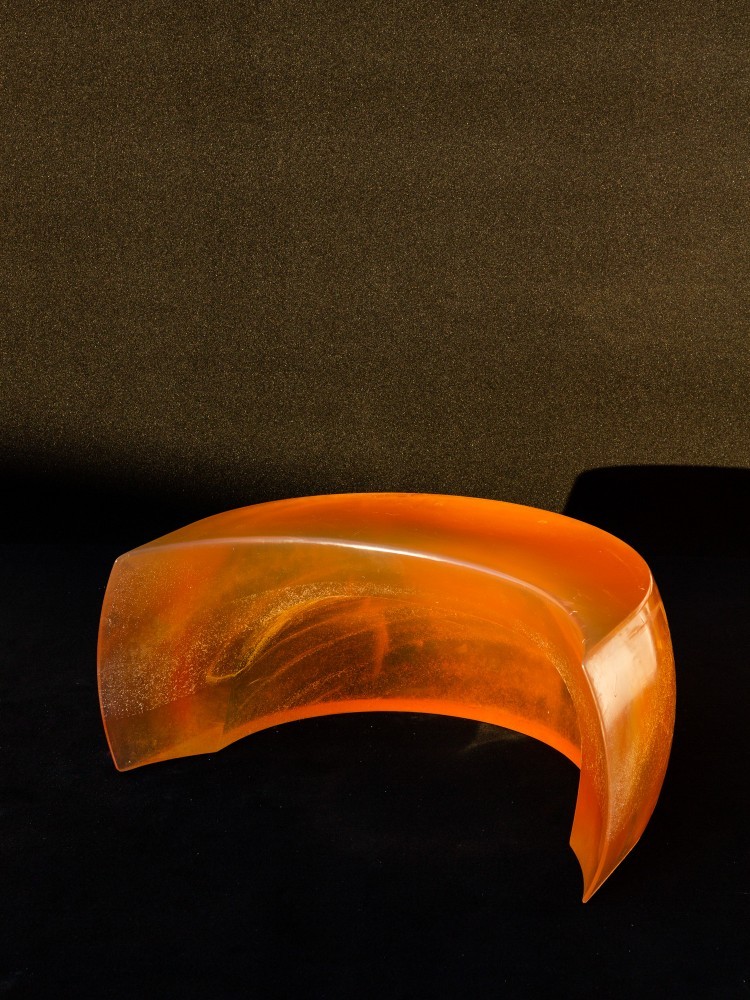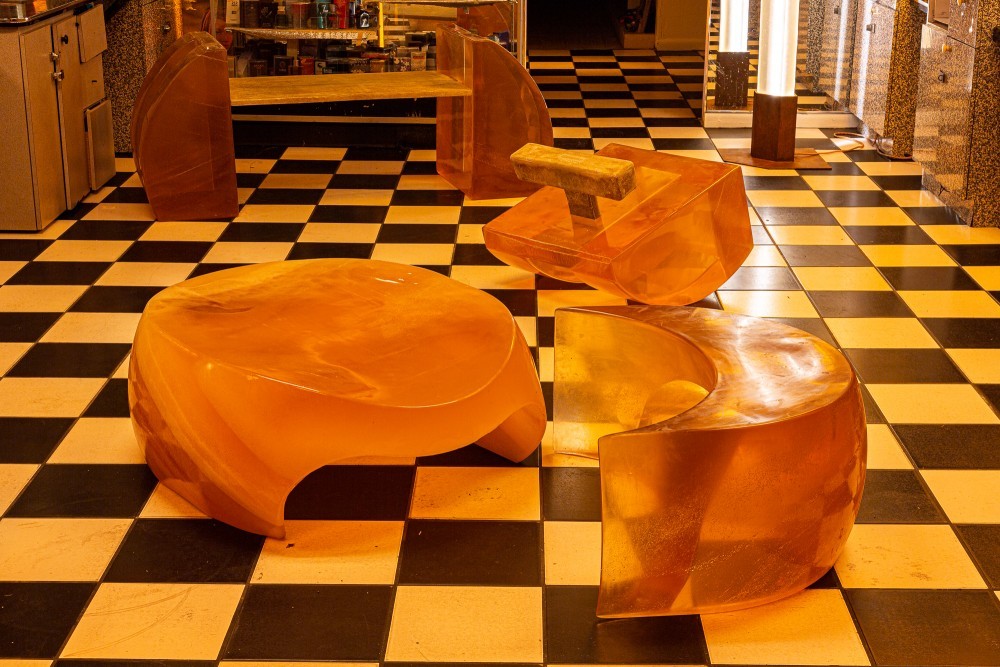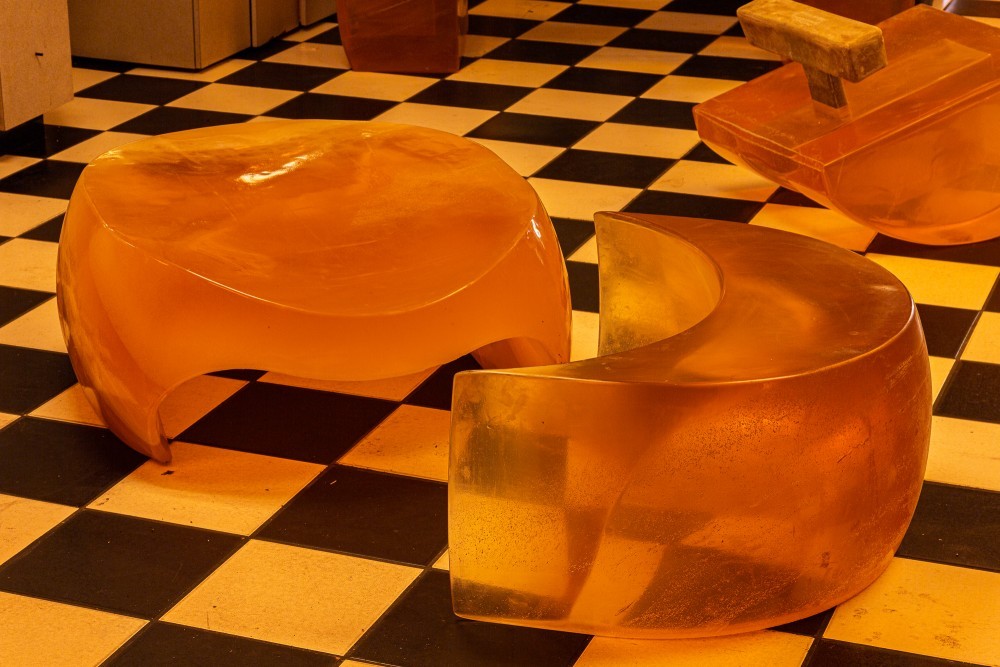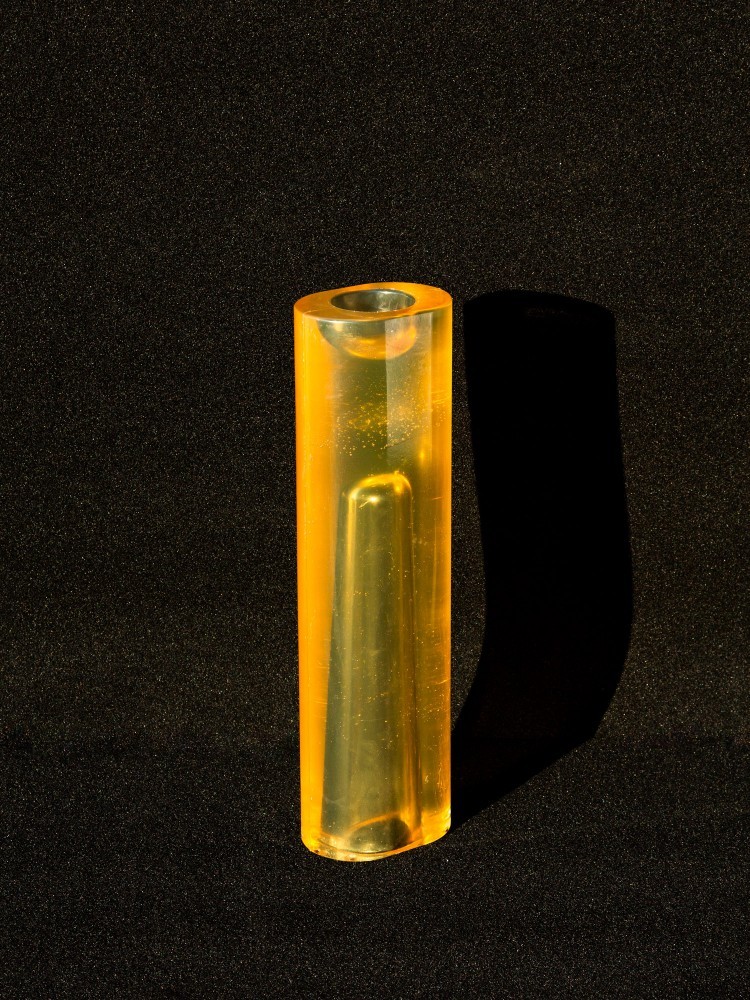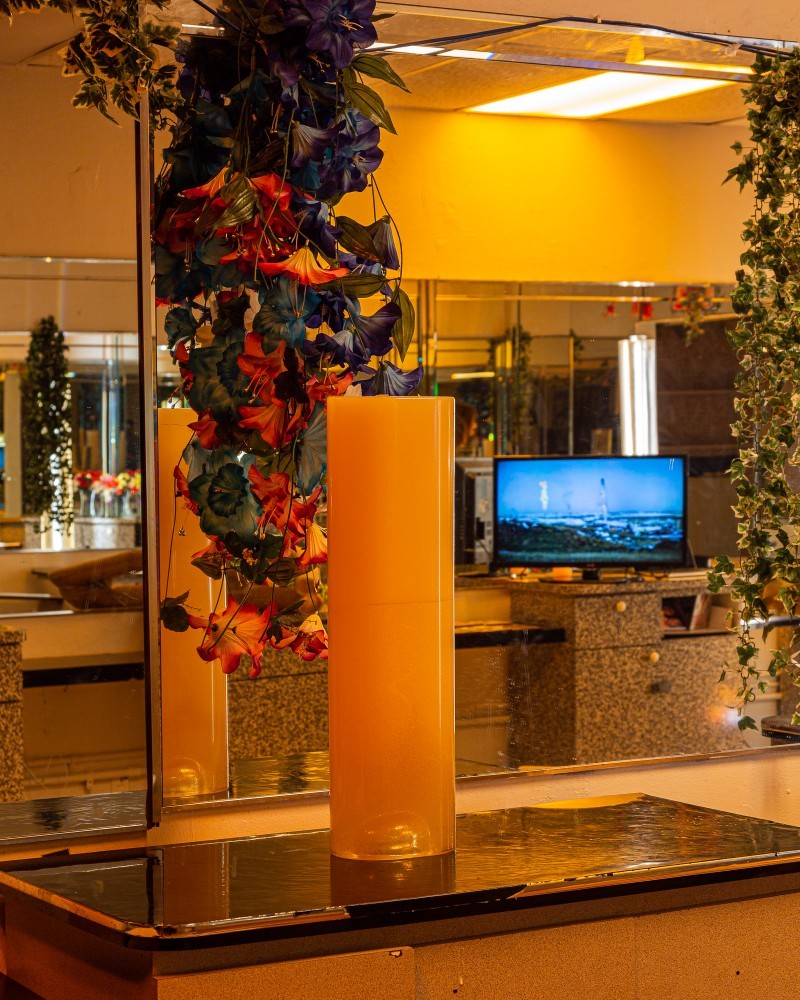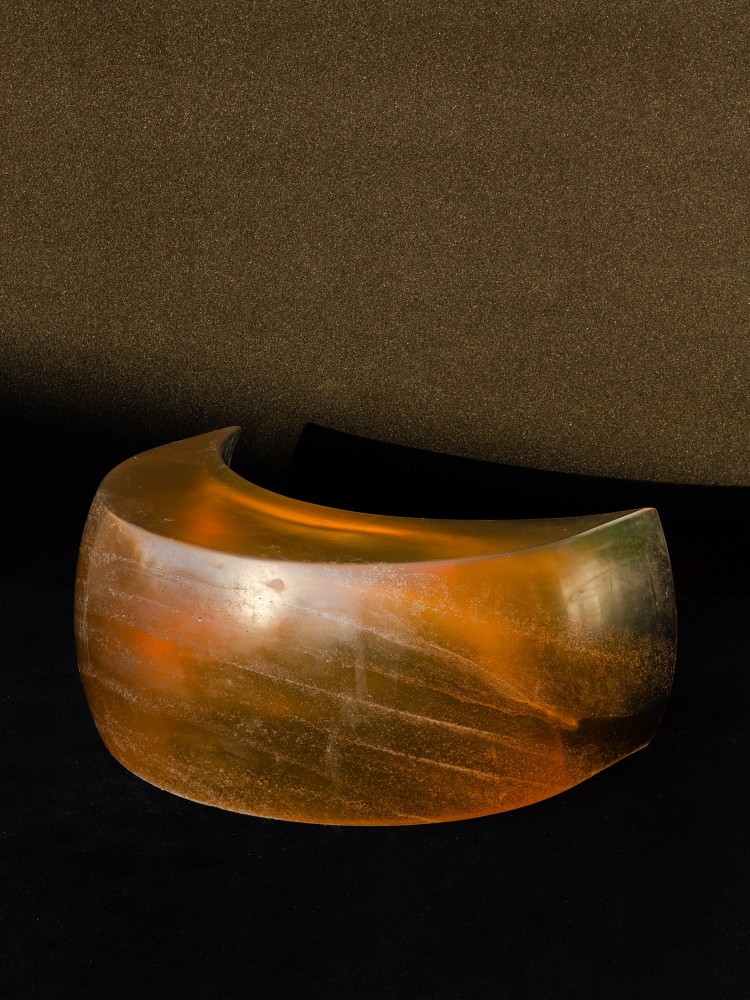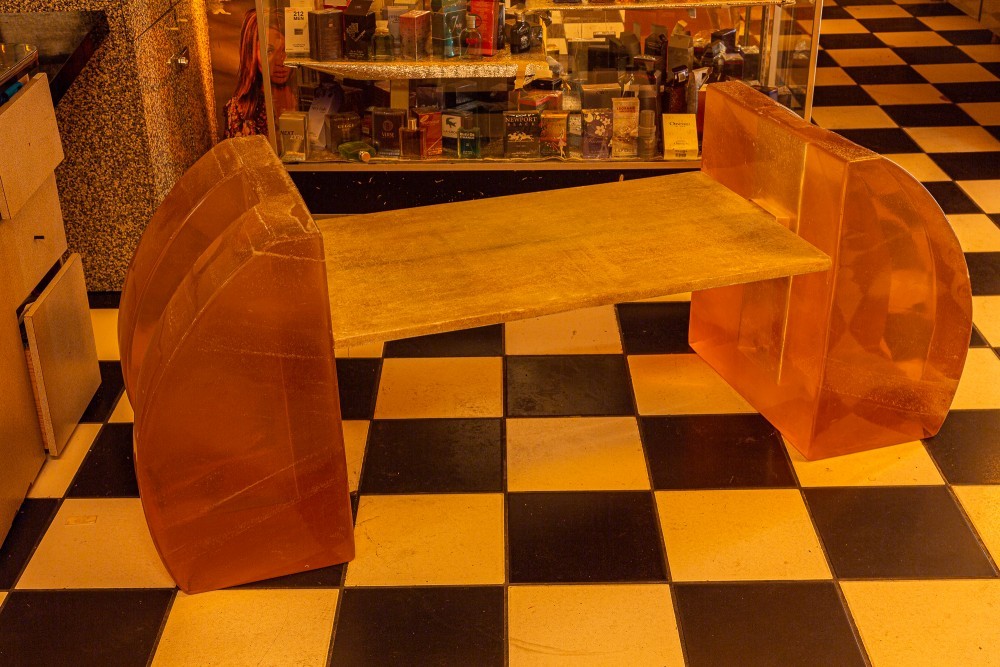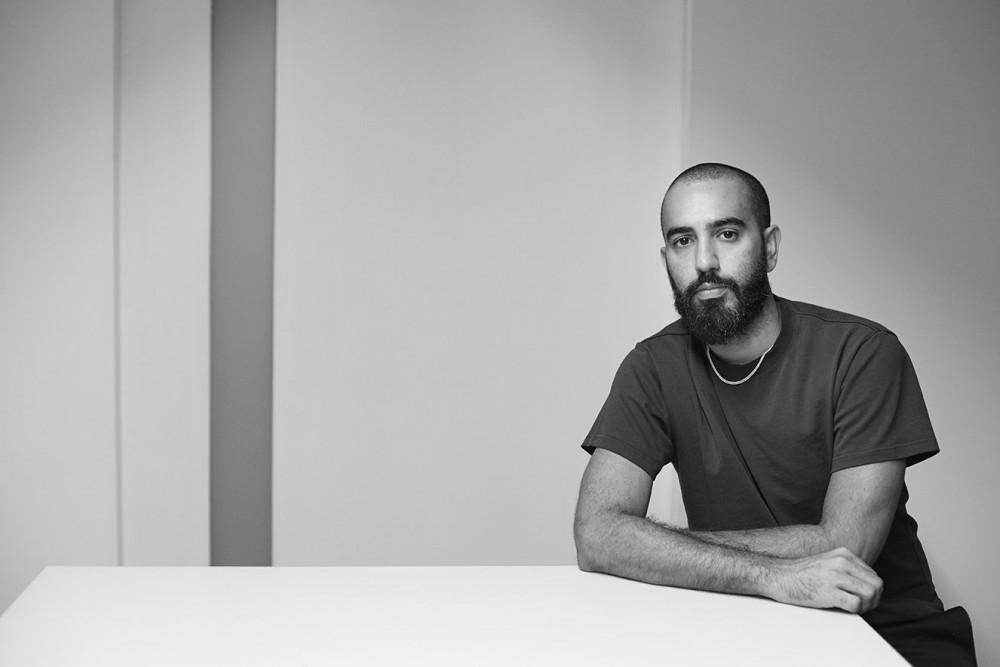INTERVIEW: Rich Aybar Makes Rubber Furniture and Documentary
This December, Rich Aybar’s debut furniture collection launches during the week of Art Basel Miami Beach. Its beguiling range of large and medium-scale pieces wrought in amber rubber — lamps, footstools, side tables, a rocking chair, and yes, a water fountain surrounded by rubber tits — presents a new take on translucency, tactility, and the colonial history of one of humankind’s most essential materials. An experimental documentary on the politics and history of rubber, which Aybar created in collaboration with his former Hood by Air colleague Leilah Weinraub, is a part of the exhibition titled Amber Alert: The Nostalgia Series, on view at Blessing, a hair salon and restaurant in Little Haiti. We talked to the fashion operative turned furniture designer about this new project and how it came to be.

Rich Aybar photographed by Josep Fonti for PIN–UP.
Emily Segal: How did this project get started?
Rich Aybar: When the project began, I was working in fashion and doing a lot of abstract marketing work, such as styling for editorials and advertising campaigns. Then, one season, I was asked by Hood By Air to go to Turkey to help them develop a collection, which is something that I had never done before. I found myself in a factory setting, working out very concrete problems with tangible results, which I could hold in my hand, which was an exciting challenge for me. After that, I started tooling around with some pieces of foam while I was living in Berlin. I wanted to make some easy furnishings for my apartment — a stool, a plinth to put plants on, something to put my stereo on — and I didn’t just want to buy things. So I started making them. I didn’t think that it would develop into a collection or anything bigger than that, but here we are now.
What was your apartment in Berlin like?
My apartment in Berlin was part of council housing for mixed-income families — a smallish, one bedroom with a big balcony. And I had it tricked out like a green-screen recording studio, which meant that I had put a green carpet up on the wall and upholstered the couch in the same green carpet and made an extension of it beyond the couch. And then I had a DV camera set up in front of it and all these studio lights around it near my desk. So it had a very literal casting couch implication, which always caused a funny reaction when people came over. And I was interested in that, but I also wanted to add more colorful and pragmatic things to my home.
What happened next?
I had a thing for translucent rubber. There was something to me really attractive in the material, just the fact that it was translucent but it wasn’t hard like resin, that it had a give to it. I had been going to the furniture fairs and seeing a lot of resin and glass. I was interested in the translucency, but not so much in the tactile aspect of those materials. Translucency to me has its importance because it seems to strive towards accountability in design. Everything is visible. With rubber, there’s also the sex toy reference, like fleshlights and things like that, that are translucent but still have a bounce back.
When I started I came across a lot of problems working with large amounts of rubber in Germany specifically because everybody only saw it as an industrial material. So I had to pursue other fields. And the field that was most amenable to working with an unusual material like this, in a large scale, was the cinema effects industry, just because they're in the business of making replicas of other things out of rubber. This helps to make to make an item more human friendly in the interaction. The idea of mimicry or positive trickery with rubber was very interesting to me — that you can make a one-to-one copy of something and just because you change the material slightly, it becomes something that you can play with or use or have less fear of.
How did you arrive at the forms in the collection?
I was doing a very elementary exploration of the simplest of shapes — the circle and the square. I worked with EPS foam to work out some of the shapes. As I was making them, I just wanted to do stuff that felt either circular or angular but in a way that was also inviting and comfortable seeming — kind of juicy. I was also thinking a lot about jellies, edibles, Werther's Originals — all this candy — when I was making these shapes. They're meant to be very easily recognized as something that we want to ingest.
I love the idea that in French mobile can mean furniture. Furniture that you play with, especially in the august design world where everything is so staid. And the rocking chair, for me, has a lot of associations from sitting on the porch, very passively observing, to chilling watching TV, to being with my grandmother. Over the summer, my grandfather passed and I had to spend a lot of time with my grandmother, and all of a sudden we were constantly on rocking chairs, her and I. They have a very strong association with the passage of time and the elderly, and I wanted to find a way to integrate that into contemporary design somehow, because I feel like things like that which are nostalgic and a little bit hokey are often dismissed as being too personal to be given a very valid place. And then everything else became like an exploration. What do I need to add to balance this? What do I need to add to make this comfortable? What can I take away? So I made these removable backs and arms that you can add in or out depending on what you need from the piece at that moment. So either it’s a rocking chair, or it's just a slab that moves, or it's a platform that balances. It's really up to you, the user.
What about the water fountain — it is indeed a water fountain, right?
It is indeed a water fountain. I went to the Château d’Anet, Diane De Poitiers’s castle in France. And there rests her tomb, on beautiful busts of griffons with huge, rock-hard boobs. They're made out of marble. It's a woman's head with a lion's mane, and three breasts resting on a pair of lion paws. That bust took me back to Paul Verhoeven’s triple-breasted woman from Total Recall which was such an indelible image for me as a child, in terms of science fiction, human possibility, and the way you can be enhanced. So when I went to Diane De Poitiers’s castle and looked at this sculpture that was probably made four or five hundred years before that movie, it had a really strong resonance for me. I wanted to pay homage to it somehow so I made this fountain with all these extra boobs on it. And then I liked the way that my version, in rubber, references body modification like silicone breast implants.

Bench from Amber Alert: The Nostalgia Series by Rich Aybar Workshop. Photographed for PIN–UP by Daniel Terna.
I’m very curious about the documentary you created, alongside the collection.
Well, rubber feels completely invisible in the aesthetic field, and I was really curious as to why that was. As I was doing research about how we procure rubber, and how that process has changed throughout history, through my conversations, I realized a lot of people didn’t even know that rubber first came from trees — that you have to tap a tree in order to get the sap, and then later that it was made from petroleum.
So I started doing research on humanity’s history with rubber down to like its first encounter at Moctezuma's court in Tenochtitlán when Cortés came and saw the Aztec and Mayans playing ulama — which is like a form of soccer, but you play it by only hitting the ball with your hips. And the Spanish conquistadors obviously gagged when they first encountered this material which could bounce off the walls, but still remained dense and hard, not to mention the impressive way the players hit the ball onto rings high up on a wall. So they brought this material back to Europe as a curiosity. It took another 150 years for the Europeans to find commercial applications for this new material. And after that rubber took off.
It became especially significant to humans once we used it in the car tire. All of a sudden humans could move far away, so there was an impetus to make roads and fast cars. Beyond that, there’s myriad medical applications for rubber it's in hoses that are used in colonoscopies and IVs for example. It is a material that played a vital role in our development and yet, there is still a sort of mass ignorance surrounding it. So I decided to collaborate with Leilah Weinraub on a documentary about rubber. And I wanted it to have a bit of an anecdotal vibe, like something that feels comfortable and gossipy. I wanted there to be an oral inversion to the known history of our relationship to colonialism, rubber, and imperialism.
What happens after Basel? Will these pieces be available for sale?
This is an exhibit of unique pieces and prototypes — more than anything else a conversation starter about rubber. Next up, I'm going to work a lot more with pourables and molds. I've been researching new ways of making concrete and jesmonite. I'm still interested in the idea of a material that conforms to a shape.
Text by Emily Segal.
Renders courtesy of Rich Aybar Workshop.
Amber Alert: The Nostalgia Series is on view December 2 to 8, 2019 at Blessing, 8427 NE 2nd Ave, Miami.



